Master Cylinder
SAFETY FIRST: Protective gloves and eyewear are recommended at this point.
Warning: Brake fluid is very caustic and can damage paint, chrome and plastic. Wipe up any spills immediately.
Removal
Drain the brake fluid. See the Brake Fluid topic for more information.
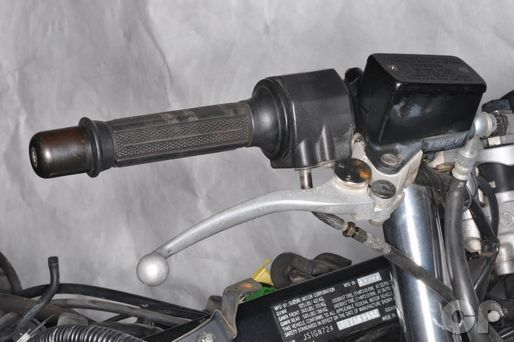
Unplug the front brake switch connector. To remove the switch loosen the screw with a #2 Phillips screwdriver.
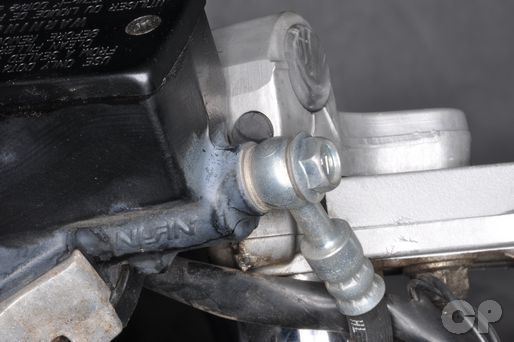
Place a rag below the brake hose where it meets the master cylinder. Loosen the brake hose banjo bolt with a 12 mm socket. Allow the brake fluid to drain into a suitable container. Do not allow the brake fluid to fall on a painted surface.
NOTE: Brake fluid is a corrosive chemical and can damage paints and some plastics. Avoid contact with skin.
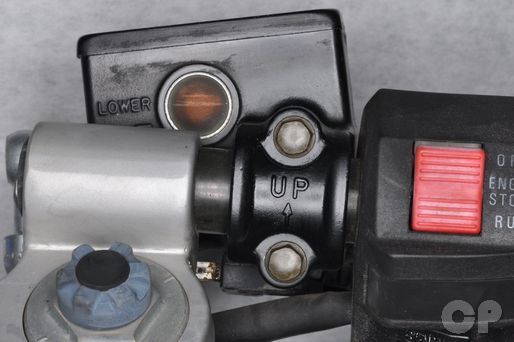
Remove the front brake perch mounting bolts with an 8 mm socket.

Remove the master cylinder.
Disassembly
Remove the brake lever pivot nut with a 10 mm socket. Remove the pivot nut with a flat blade screwdriver.
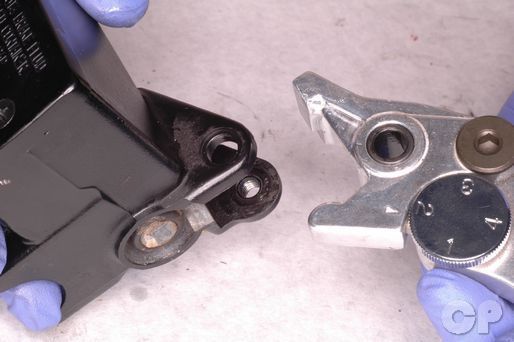
Remove the brake lever.
Remove the brake switch screw with a #2 Phillips screwdriver.
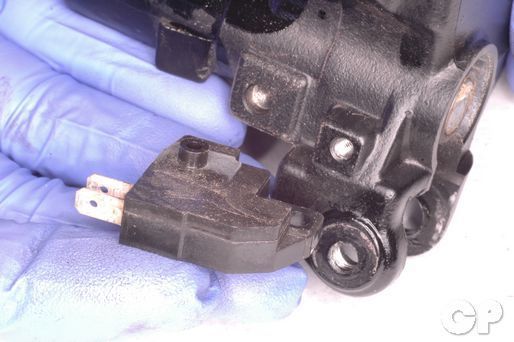
Remove the front brake switch from the master cylinder.
Remove the two front master cylinder cover screws using a #2 Phillips head screwdriver.

Remove the reservoir cap, plastic piece, and rubber diaphragm. Clean and inspect the rubber diaphragm for tears or other damage. Replace as necessary.
Pour out the remaining brake fluid into a suitable container.
Remove the dust boot.
Remove the snap ring using a pair of internal snap ring pliers. Use a suitable tool to hold back the plunger as it can spring out.
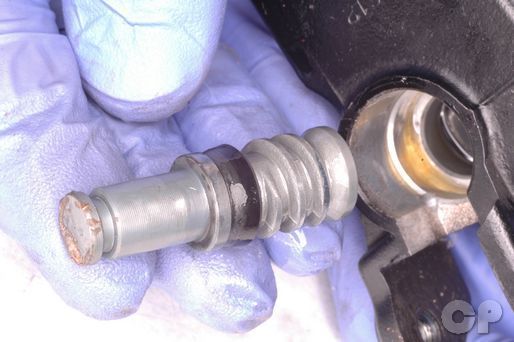
Remove the master cylinder piston and the secondary sealing cup.

Remove the spring and the primary sealing cup. Inspect the master cylinder bore for wear and damage.

Clean the master cylinder components with fresh brake fluid. Inspect the master cylinder components for wear and damage. Replace the parts as needed
Reassembly
Place a film of clean DOT 4 brake fluid on the piston, spring and master cylinder bore.

Install the spring and primary sealing cup. The large diameter end of the spring goes in first.

Install the piston and secondary sealing cup.
Push down on the piston and install the snap ring into its groove.
Install the rubber boot.

Fit the brake switch to the master cylinder so that the post on the switch fits into the hole on the master cylinder.
Install the front brake switch mounting screw. Tighten the screw securely with a #2 Phillips Screwdriver.

Install the front brake lever to the master cylinder.
Apply a light coat of grease to the brake lever pivot bolt. Insert the bolt from the top and tighten it with a #2 Phillips screwdriver. Thread on the nut and tighten it securely with a 10 mm wrench.
Installation
Mount the front brake master cylinder onto the right handlebar at the punch mark.

Make sure the arrow on the clamp faces up. Torque the upper bolt to specification first, then torque the lower bolt.
(Specification for master cylinder clamp bolt torque is 5 - 8 N-m or 3.5 - 6 lb-ft)
Connect the brake hose the master cylinder with two new sealing washers. Torque the banjo bolt to specification with a 12 mm socket.
(Brake Hose Banjo Bolt Torque: 23 N-m or 16.5 lb-ft)

Plug in the front brake switch connector.
Fill the master cylinder reservoir with DOT 4 brake fluid from a tightly sealed container and bleed the brakes. See the Brake Fluid topic for more information.
Always check the brake function after working on the brake system.
Copyright - Cyclepedia Press LLC

Note: If you are viewing this document offline be sure to visit the latest version online at http://www.cyclepedia.com before attempting any repairs. Updates are made without notice.





















